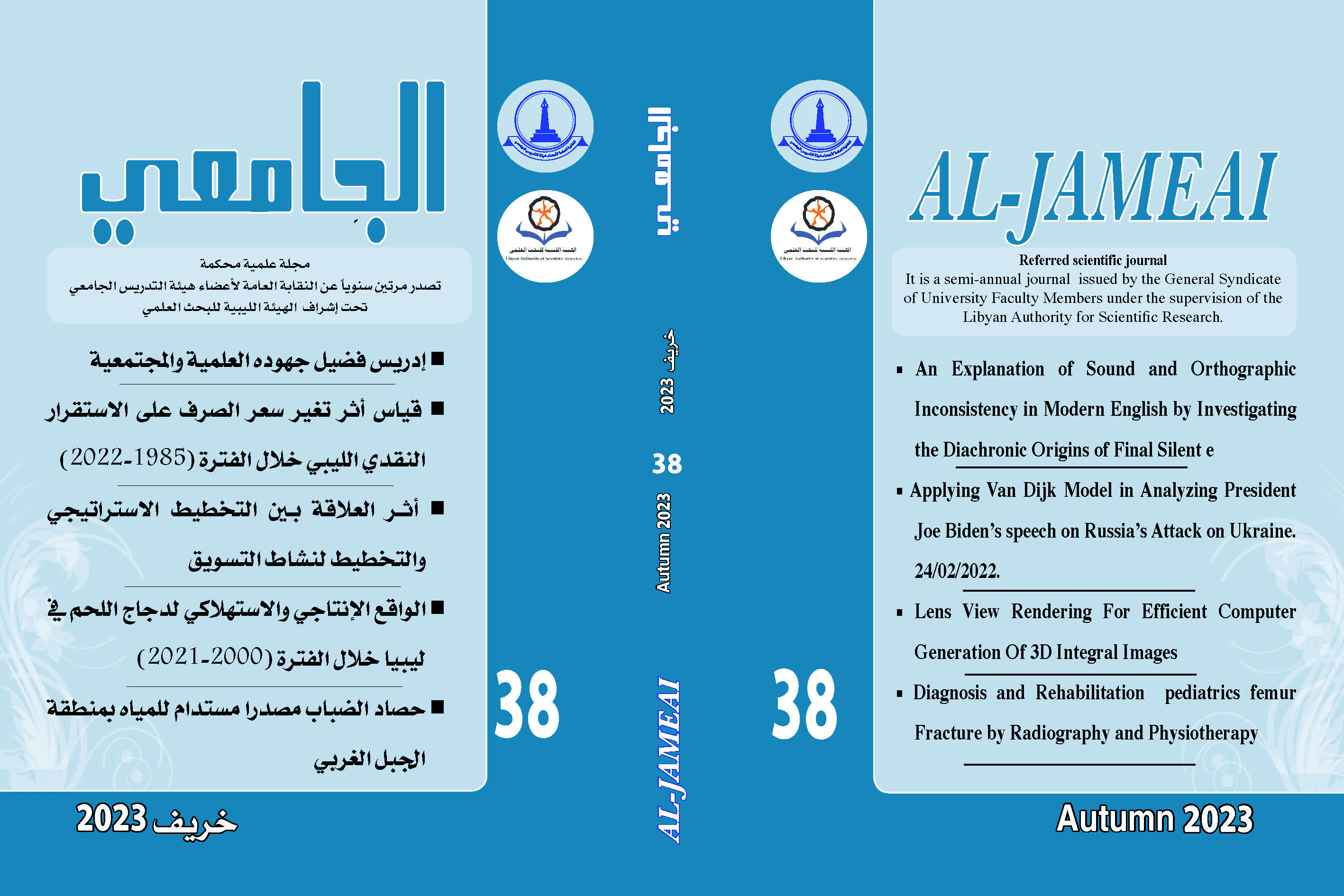An Explanation of Sound and Orthographic Inconsistency in Modern English by Investigating the Diachronic Origins of Final Silent e
Abstract
Abstract:
This study sheds light on the inconsistency between Modern English orthographic forms (spellings) and their representation in Modern English pronunciation. The study concentrates on one example of this phenomenon which is the presence of the final silent e in several English words to try to find an explanation for this phenomenon from a historical perspective by analyzing the history of 12 English words which are; bake, nose, lore, pole, sake, rake, hone, poke, more, sore, wake, and rope. The study concludes that this inconsistency is a result of the fact that sound changes which affected English language during history did not happen accompanied by spelling changes all the time. In some cases, sound changes led to spelling changes, but in other times, they did not and spellings remained stable. The final e is not really silent as it represents a preceding long vowel.
المستخلص
تسلط هذه الدراسة الضوء على عدم الاتساق بين الأشكال الإملائية للغة الإنجليزية الحديثة (التهجئة) وتمثيلها في نطق اللغة الإنجليزية الحديثة. تركز الدراسة على مظهر واحد من مظاهر هذه الظاهرة وهو وجود حرفꬲ ساكن في نهاية بعض الكلمات الإنجليزية الحديثة لإيجاد تفسير لهذه الظاهرة من منظور تاريخي. من خلال إجراء تحليل لتاريخ 12 كلمة إنجليزية. توصلت الدراسة إلى استنتاج مفاده أن هذا التناقض هو نتيجة لحقيقة أن التغييرات الصوتية التي أثرت على اللغة الإنجليزية خلال التاريخ لم تحدث مصحوبة بتغييرات إملائية طوال الوق في بعض الحالات، ولكن في أوقات أخرى، لم يحدث ذلك وظلت التهجئة مستقرة. حرفꬲ في نهاية الكلمة ليس صامتا تماما لأنه يشير الى وجود حرف علة طويل قبله.
Downloads









